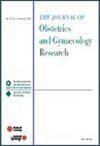Quality of birth care and risk factors of length of stay after birth: A machine learning approach
Abstract
Aim
Length of stay (LOS) is an outcome measure and is assumed to be related to quality. The objective of this study is to examine the quality of birth care and risk factors associated with LOS after birth.
Methods
A nationwide population-based Turkish Demographic and Health Survey (TDHS) was used for the year 2018. A total of 1849 women ages 15–49 were included. Explanatory factor analysis and machine learning predictors such as Random Forest, Support Vector Machine, Neural Network, k-Nearest Neighbor, and Naïve Bayes were used to identify the quality of birth care and risk factors associated with LOS after birth.
Results
As a result of the explanatory factor analysis, factor structures of quality of birth care, antenatal check-ups and supplements, and risk factors associated with birth were obtained using the Categorical Component Analysis method. The type of delivery, place of delivery, age, and type of place, which are under the quality of birth care, and risk factors associated with birth factors were found to be the variables that had the highest impact on LOS estimation. Random forest (Accuracy = 0.5789), support vector machine (radial) (Accuracy = 0.5766), and neural network (Accuracy = 0.5750) models outperformed, respectively.
Conclusion
Type of delivery which is an indicator of quality of birth care is a strong predictor of LOS after birth according to the Random Forest model. We demonstrated that machine learning techniques offer precise LOS prediction after birth. Further studies assessing the effect of quality of birth care on predicting LOS at birth would be beneficial.

 求助内容:
求助内容: 应助结果提醒方式:
应助结果提醒方式:


